



“Flexicity, information city, intelligent city, knowledge-based city, MESH city, telecity, teletopia, ubiquitous city, wired city… [what is] a city that dreams of itself?” (Jones 2016).
This April, 28 brave souls came together for the first time to explore algorithmic ghosts in Brighton — a city known for its blending of new-age spiritualities and digital medias, but perhaps not yet for its ghosts — through the launch of a new psychogeography tour for the Haunted Random Forest festival. Unveiling machine entities hidden within seemingly idyllic urban landscapes, from peregrine falcon webcams to always-listening WiFi hotspots, we witnessed a new glimpse of an old city, one that afforded many strange moments of unexpected (and perhaps even radical!) wisdom regarding the forgotten structures, algorithms and networks that traverse Brighton daily alongside its human inhabitants.
This intervention found its greatest inspiration in the playful, crtitical, anti-authoritarian strategies of the Situationist International group that was prominent in 1950s Europe and birthed the fluid concept of dérive or “drift”, a new method for engaging with cities like Paris through “psychogeographic” walks that charted increasingly inconsistent evolutions of urban environments and their effects on individuals. “Perhaps the most prominent characteristic of psychogeography is the activity of walking,” explains Sherif El-Azma from the Cairo Psychogeographical Society. “The act of walking is an urban affair, and in cities that are increasingly hostile to pedestrians, walking [itself]… become[s] a subversive act.”
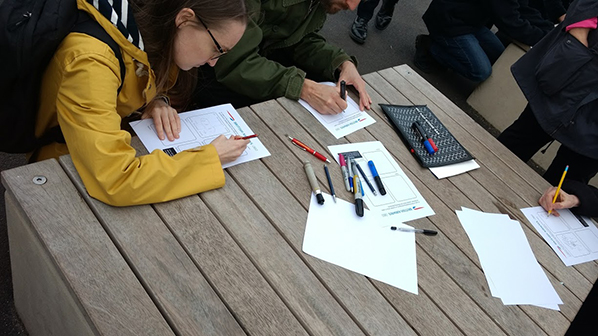
Psychogeographical drifts have been interpreted in many ways in many places, from radical city tours with no set destination, to public pamphlets meant to shock people out of their daily urban routines, to unsanctioned street artworks that explore changing architectures and hegemonies of the built environment through direct dialogues. As the Loiterer’s Resistance Movement explains, “We can’t agree on what psychogeography means, but we all like plants growing out of the sides of buildings, looking at things from new angles, radical history, drinking tea and getting lost, having fun and feeling like a tourist in your home town. Gentrification, advertising, surveillance and blandness make us sad… our city is made for more than shopping. We want to reclaim it for play and revolutionary fun.”
In our own interpretation of the psychogeography “play box“, people from across the UK came together from local community discussion lists, universities and creative networks to join the group. We called them ‘node guardians’ to connote a shared sense of ownership regarding both the tour nodes (which were lead not only by ourselves but also by several other brave participants, who also facilitated hands-on activities to engage listeners more deeply in the lived experiences of each machine node). We were intrigued about the moments of access, control and liberation that might be exposed when the machines, networks and algorithms that we engage with on a daily basis were revealed. In the unearthing of lesser-known instances of code-based activity (and the patterns within), we hoped to meet machine spirits, languages and loves along the way. And meet them we did.
Although the tour aimed to seek out algorithms and machines, we didn’t feel limited to influences from our current digital age. Brighton has a rich history of invention and engineering which has influenced the local geography as well as wider culture. The ghosts of Magnus and George Herbert Volk, father-and-son engineers, can be found all over the city, from Magnus Volk’s seafront Electric Railway which opened in 1883 — making it the oldest working electric railway in the world — to George’s seaplane workshop in the trendy North Laine shopping area, which went on to house a thoroughly modern digital training provider, Silicon Beach Training. Magnus Volk’s most unusual invention, though, only exists as a part of Brighton’s colourful history: the Brighton and Rottingdean Electric Railway, as it was officially called, earned the nickname the ‘daddy-long-legs railway’ as it ran right through the sea with the train car raised up above the waves on 7-meter-long legs. The railway was only in operation for 5 years from 1896 to 1901, but you can still see some of the railway sleepers for the tracks along the beach at low tide.
For a relatively small town, Brighton also played a surprisingly big role in the development of the international cinema industry. In the 1890s and 1900s, a group of early filmmakers, chemists and engineers called the Brighton School pioneered film-making techniques such as dissolves, close-ups and double exposure, and created new processes for capturing and projecting moving images. Key members of the group used the old pump house in local pleasure garden St Ann’s Wells as a film laboratory and shot the world’s first colour motion picture called ‘A Visit to the Seaside’ in Brighton in 1908, using a colour film process called Kinemacolour invented by the group. Although the city’s early passion for cinema is remembered by several blue plaques marking key locations — and the presence of the Duke of York’s cinema, the oldest continually operating cinema in the UK — we wondered how much of Brighton life had been captured in the dozens of short films made at the turn of the century, only to be lost forever?
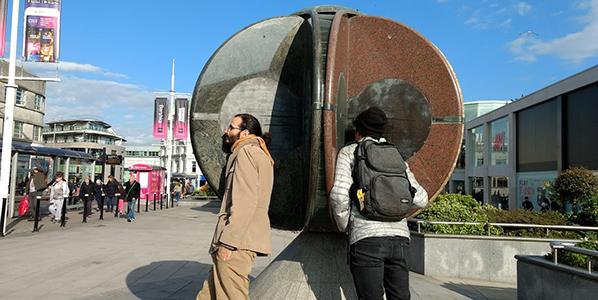
The rest of the stops on our walking tour took in more contemporary machine ghosts, including the last remaining trace of the city’s USB dead drop network — conveniently embedded in a brick wall on the seafront above the Fishing Museum — which prompted us to ask what information people may have passed to each other before these devices were destroyed by weather and vandals. Dead drops were originally set up to be an anonymized form of peer-to-peer file-sharing that anyone could use in public spaces. They have since been embedded into buildings, walls, fences and curbs across the world. Perhaps some of our tour participants will even be inspired to set up new dead drops around the city to keep the potential for off-grid knowledge-sharing alive.
In a reversal of this spirit of anonymous digital communication, a new network of WiFi-enabled lampposts, CCTV cameras and other pieces of ‘street furniture’ has been unobtrusively installed across the city by BT, in partnership with Brighton & Hove City Council. They now eavesdrop on the personal musings of passers-by who connect to them. These hidden devices provide users with a free WiFi service, but the group wondered at what cost. Participants found themselves questioning whether BT can be trusted to keep our information secure in an age where data has become a valuable marketing commodity.
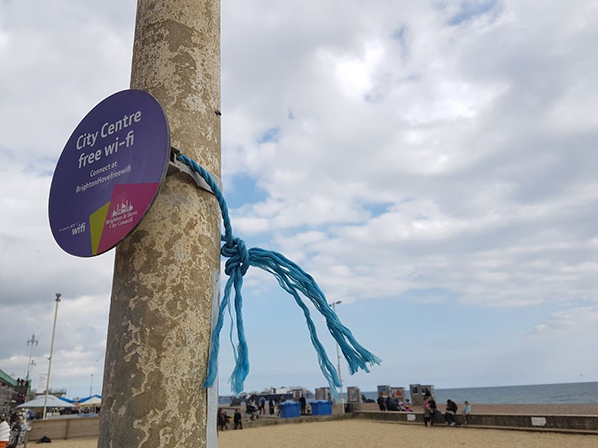
As part of our psychogeographical aim to unveil the hidden lives of once-familiar urban artefacts, we also summoned the machine ghosts of some of Brighton’s most famous (and infamous) landmarks. Looming over the city centre is a towering modernist high-rise called Sussex Heights, a building that sticks out like a sore thumb amidst the classic Regency architecture of the city’s Old Town. Yet atop the concrete tower also live families of peregrine falcons, whose nesting activities are broadcast to the world by an ever-watching webcam. Conservation groups, architects and technologies intersected in 1990 to provide a nesting box that would enable the falcons, extinct in the area at the time, to successfully breed. They now return to the tower block every spring to rear their young (except in 2002, when they chose the West Pier instead). Writing down our best wishes to this season’s hatchlings, we pasted them onto the building for future city ghosts to browse.
The other most visible instance of architectural and structural technologies descending upon the city can be seen in the new British Airways i360 viewing tower, variously described as a ‘suppressed lollipop’, a ‘hanging chad’, ‘an oversized flagpole’, an ‘eyesore’ and a ‘corporate branding post’. Even if you leave the city, you can’t get away from the sight of the 162-metre tall tower, as it is equally visible from the countrysides surrounding Brighton. It overshadows its neighbour, the beloved remains of the burnt-out West Pier, and opened exactly 150 years after the West Pier first opened in 1866. However, the ‘innovation’ in the i360’s name may be a boon to the city, as it’s expected to pour £1 million a year in the local community and potentially inspire the renovation of the West Pier. Our node-guardians bravely attempted a participatory activity outside the i360 which involved sketching out mock flight warnings to those who entered its gates; the mock flight attendants situated at the base of the i360 were less than amused by these efforts.
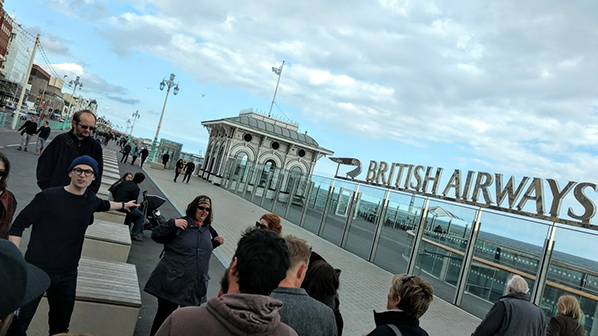
In most towns, the shopping centre becomes a well-known haunt for both locals and visitors to congregate, yet most people who visit Brighton’s Churchill Square shopping mall pass by the square’s large pair of digital sound sculptures without even a glance. The sculptures look like a pair of matching stone and bronze spheres, and are the type of public art that you can walk past everyday without actually looking at, but after looking into their always-observing faces once, you’ll never miss them again. They quietly interact with the sky every day through a set of complicated light sensors that trigger a series of musical notes tuned in to each orchestration and angle of the sun. As the sun rises, they call out to one another, their combined song fading away as the sky turns dark. Or at least, we are told they communicate; after a group activity to emulate the interactivities of the spheres, we found ourselves quite unsure if we had actually heard ghostly spherical music emanating from spherical mouths, or just the sound of shoppers and buses passing by.
And finally, if you’ve lived in Brighton for a while you’ve probably come across the French radio station FIP, which until a few years ago you could tune into on radios across the city. While standing in the bustling North Laine cultural quarter, we were briefly transported to Paris by one of our node guardians’ melodica renditions of Parisian cafe music, and heard the story of how a local resident introduced Brighton to FIP in the late 1990s when they started re-broadcasting the radio station out over the city. It became one of the most popular radio stations in town and transmissions continued until 2013, even surviving an Ofcom raid on the mystery broadcaster’s house in 2007 when their equipment was confiscated. The story of Brighton’s love for FIP radio, including a monthly fan-organised club night called Vive La FIP that joyously ran from clubs around the city for years, shows that as well as its own ghosts, our city is also haunted by the machines of distant places.
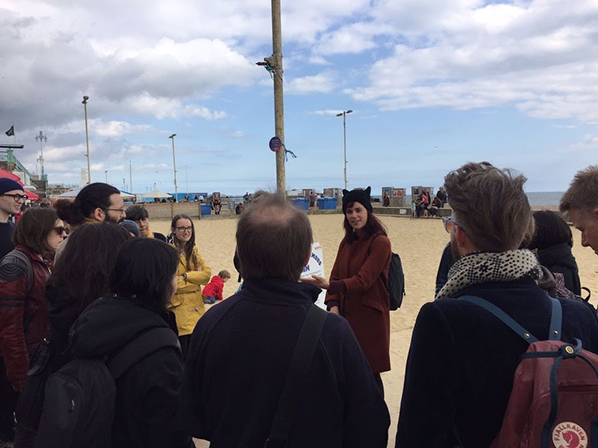
Indeed, from the distant ghosts of rebellions past to those who quietly slip by underfoot as we walk to the pier, the derives of this tour taught us that unearthing hidden histories of a city can bring both good and bad spirits back to life — moments of local liberation and defiance existing alongside a national state of increased surveillance, conglomeration and control. We call for future tours, psychogeographic and otherwise, that challenge participants to think about Brighton through new forms of engagement that focus on grassroots and community efforts, and their implications in the spaces and places we use every day. Only then can we determine whether the ghosts that surround us are in charge of our fates, or whether the myriad past and present struggles of this city can co-exist in collaboration.
Opening Event: Saturday 13 October 2012, 1-4pm
co-hosted with The Festival of Mint – A Celebration of Local Growing – serving mint tea and mojito
Contact: info@furtherfield.org
DOWNLOAD PRESS RELEASE FOR PRINT HERE
+ See images of the exhibition on Flickr.
To be alive is to be wild. And we humans have a will that shapes the world with language, song, lust, labour and play. And for those of us who connect with it, a network of machines now extends our reach, amplifies our urges and quickens our exchanges.
The artists in this exhibition work and play with living organisms and technical things, systems and language, to explore how our relation to the natural world is changing. They introduce us to the unruly life going on in other natural webs of communication, knowledge and feral exchange. Gallery visitors (humans and dogs) are invited to view videos, interact with art installations and social media and undertake walks in the surrounding park with its other animals and edible plants.
Mary Flanagan travels overland and undersea in virtual worlds. Her journeys in the worlds are caught on video. Her avatar scouts the boundary lines of ‘heritage’ landscapes built by “residents”. Her walks are inspired by Thoreau, the great American writer and walker, who knew that ‘all good things are wild and free’.
![Aquitaine from the [borders] series by Mary Flanagan](http://www.furtherfield.org/wp-content/uploads/2012/08/borders-acquitaine-web.jpg)
Andy Deck calls attention to echoes of the wild in language. Despite the many entertaining digital visions of nature beamed to the flat screen, a wealth of intuitions relating to nature still survive in colorful expressions passed down for centuries. He invites you to help him build a bestiary of animal idioms using social media and a gallery installation.*
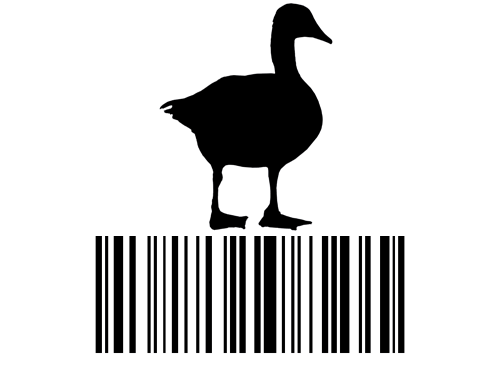
Sarah Waterson has invented a set of cartographic tools for dogs (and their human friends) to develop an interspecies psychogeography. Her electronic mapping system generates sniff data, routes and photographic journals supporting communication, collaboration and knowledge-sharing between companion species.
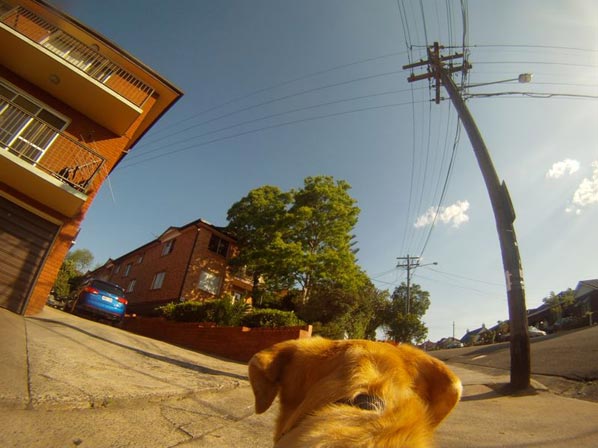
Helen Varley Jamieson and Paula Crutchlow dramatise the private actions and global consequences of our domestic lives in a long-running series of networked performances located in peoples’ homes. Dave’s Quiz (part 2) is an interactive extension of their provocation to discuss and appreciate relationships between personal, state and corporate responsibility around issues of consumption and disposal in late-capitalism.
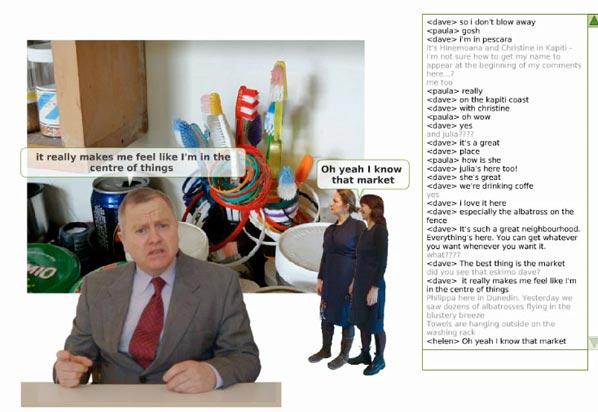
Artists duo Genetic Moo invite us to discover a dark, interactive sea of wiggling, luminescent creatures that gorge on torch light. They fantasize an evolutionary digression through the lens of human sensuality, drawing on images made by early scientists as they first found micro organisms or Animacules swarming in every sea, pond and pool of saliva.
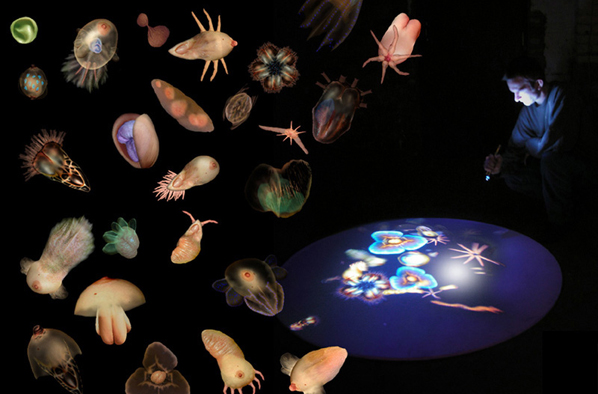
Disquieted by the environmental impact of constant technological upgrades, Dominic Smith works with open knowledge from the DIY mycology movement to create a system that combines the waste products from the tools and fuels of the contemporary coder. Out-of-date software manuals and coffee grounds are shredded to create a compost for fruiting oyster mushrooms to be harvested and consumed by visitors.**
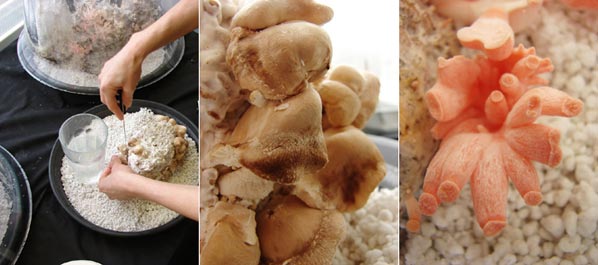
This exhibition is dedicated to Jay Griffiths, author of WILD: An Elemental Journey (2006).
* Crow_sourcing is a 2012 Commission of New Radio and Performing Arts, Inc. for its Turbulence website. It was made possible with funding from the Jerome Foundation. http://Turbulence.org/Works/crow_sourcing
** Dominic Smith developed this iteration of the shredder concept, originated by Julian Priest, David Merritt & Adam Hyde, as part of the geekosystem project. It is an experimental transposition of software development methods taking an organic, material form. It’s also worth noting that in his 1998 net art work Shredder 1.0 Mark Napier took the texts and images from pages of the WWW and jumbled them in colourful abstractions to reveal their ‘rawness’ once freed from the strict orthodoxies of web page design.
Crow_sourcing by Andy Deck
[borders] by Mary Flanagan
Animacules by Genetic Moo
make-shift: Dave’s quiz (part 2) by Helen Varley Jamieson & Paula Crutchlow
Shredder by Dominic Smith
Laika’s Dérive – The dogs de Tour by Sarah Waterson
Paula Crutchlow
Paula Crutchlow is a performance maker and director who co-authors live events across a variety of forms. As a co-founder and director of Blind Ditch she combines digital media and performance to engage audience and participants in distinct and active ways. Her work often uses a mix of score/script, improvisation and structured interaction to focus on boundaries between the public-private, and issues surrounding the construction of identity and the politics of place. Paula is currently the Creative Advisor for Adverse Camber directing work with some of the UK’s leading storytellers, she was an Associate Lecturer in Theatre at Dartington College of Arts, Devon 2001-10, and teaches Digital Performance Practice at the University of Plymouth.
Andy Deck
Andy Deck specializes in collaborative processes and electronic media. As a Net artist and software culture jammer, Deck combines code, text, and image, demonstrating patterns of participation and control that distinguish online presence and representation from previous artistic practices. In addition to numerous online exhibitions, his work has appeared in exhibitions like net_condition (ZKM), Unleashed Devices (Watermans Art Centre), and Animations (PS1-MoMA). He is also a co-founder of Transnational Temps, a media arts collective concerned with making Earth Art for the 21st Century.TM After showing in EcoMedia, a ground-breaking series of european exhibitions, Transnational Temps mounted the 2010 oil-related exhibition Spill>>Forward in New York. In 2011 Deck received first prize in the interactive division of the LÚMEN_EX Digital Art Awards. Deck’s work, currently shown by the Whitney Museum of American Art’s Artport and the Tate Online, has been commissioned by these and other prestigious institutions. Deck lives and works in New York City.
Mary Flanagan
Mary Flanagan is an artist focused on how people create and use technology. Her collection of over 20 major works range from game-inspired systems to computer viruses, embodied interfaces to interactive texts; these works are exhibited internationally at venues including the Laboral Art Center, The Whitney Museum of American Art, SIGGRAPH, Beall Center, The Banff Centre, The Moving Image Center, Steirischer Herbst, Ars Electronica, Artist’s Space, The Guggenheim Museum New York, Incheon Digital Arts Festival South Korea, Writing Machine Collective Hong Kong, Maryland Institute College of Art, and venues in Brazil, France, UK, Canada, Taiwan, New Zealand, and Australia. Her three books in English include Critical Play (2009) with MIT Press. Flanagan founded the Tiltfactor game research laboratory in 2003, where researchers create game interventions for social change.
Genetic Moo
Genetic Moo build living installations in pixels and light. The duo have been creating interactive art since 2008. Virtual creatures are constructed from choreographed video clips, combining elements of the human and the animal. They respond in a variety of life-like ways to audience motion, sound and touch and vary in size from the tiny Animacules to the all encompassing Mother. The works are driven using Open Source and Flash Software utilizing a variety of interactive interfaces. The programming behind the work is just complex enough to make the creatures appear more believable and create rich user driven narratives.
Schauerman and Pickup both gained Masters degrees from the Lansdown Centre of Electronic Arts. Their work has been exhibited extensively including the De La Warr Pavilion (2010); Watermans (2010) The Wellcome Collection (2011) and Glastonbury (2011). One of their works, Starfish, received a John Lansdown Award for Interactive Digital Art at Eurographics (2007) and was nominated for an Erotic Award (2012).
Helen Varley Jamieson
Helen Varley Jamieson is a writer, theatre practitioner and digital artist from New Zealand. In 2008 she completed a Master of Arts (research) at Queensland University of Technology (Australia) investigating her practice of cyberformance – live performance on the internet – which she has been developing for over a decade. She is a founding member of the globally-dispersed cyberformance troupe Avatar Body Collision, and the project manager of UpStage, an open source web-based platform for cyberformance. Using UpStage, she has co-curated online festivals involving artists and audiences around the world. Helen is also the “web queen” of the Magdalena Project, an international network of women in contemporary theatre.
Dominic Smith
Dominic Smith is an artist who engages with project hierarchy, ownership of ideas and heuristic curatorial strategies. Dominic is a founding member of ptechnic.org. He has exhibited and performed at Govett-Brewster Art Gallery in New Zealand, at the ICA in London, CCA Glasgow, AV Festival, Newcastle and Eyebeam NY. He has a doctorate with CRUMB at Sunderland University that examines the relationship between open source production methods, and art/curating methods. Dominic is also the current curator of thepixelpalace.org through which he also developed and runs basic.fm
Sarah Waterson
Sarah Waterson has practised as a new media artist for the past twenty years. Her works include electronic installations, collaborations with performers, video and audio work, generative and software based artworks, VR environments and data visualisations and ecologies. Interdisciplinary and collaborative practice informs the development and ultimately the design of these artworks. Her current interests include data mapping, data ecologies and cross species collaboration.
Sarah’s recent interactive installations have included: Laika’s Dérive (Performance Space, Carriageworks 2011), 33ºSouth (collaboration with Juan Francisco Salazar, Casula Powerhouse 2009), a custom made data mapping system that juxtaposes the cities of Sydney (Australia) and Santiago (Chile) trope, a e-literature project developed for the Second Life environment (SWF 08, ongoing), subscapePROOF (collaboration with Kate Richards, Australian Centre for the Moving Image, Melbourne), and subscapeBALTIC (ISEA2004, Helsinki, Finland). Sarah is a senior lecturer in interactive media at the School of Humanities and Communication Arts, University of Western Sydney, Australia.
Furtherfield Gallery
McKenzie Pavilion, Finsbury Park
London N4 2NQ
T: +44 (0)20 8802 2827
E: info@furtherfield.org
Furtherfield Gallery is supported by Haringey Council and Arts Council England
Marc Garrett: You are an artist who works solo and with others in various ways. A large body of your work consists of performances, interventions and sound recordings. I want to begin this interview by asking, why you decided to form ‘The NeoFuturist Collective‘, and what was the main mission or purpose behind such a collective?
Joseph Young: The NeoFuturist Collective was born as a convenient way to house a piece of work I was making called ReAwakening of a City. The idea had started as part of a practice-based PhD at SMARTlab UEL, but as soon I got funding for the project from the Arts Council, I realised I didn’t want to spend the next four years writing about it…
I invited a group of artists to join me in making a collaborative piece of work from a seemingly simple premise – the transformation of urban noise, inspired by futurist artist Luigi Russolo’s Art of Noises manifesto. Russolo had created a series of “noise networks” or symphonies for his mechanical intonarumori (noise makers) back in 1914, and in so doing he had influenced the entire course of 20th century music.
Despite his contemporary resonance, little is generally known about Russolo’s work, as all of his instruments were destroyed in the intervening two world wars. Of the scores he wrote, only the first 7 bars remain of Awakening of a City, and that only because it was reprinted in the art magazine Lacerba. Apart from the fragment of written score there are letters, reviews, photographs and other forms of documentation which have led researchers and artists over the years to try and recreate his noise making instruments.
Our project is rather different – we use the remaining 7 bars as the starting point for a new piece of work, ReAwakening of a City, engaging with all forms of visual and aural urban noise that we spend so much time trying to block out. Traffic noise, junk emails, health and safety warnings, advertising and street furniture. The form is performative, visual and mediated as well as musical, using all available means at the disposal of the 21st century artist.
By engaging with my artist-collaborators’ practices, I commission work that responds to this central idea and then set up an appropriate curatorial context for extending that individual response into a collective noise network.
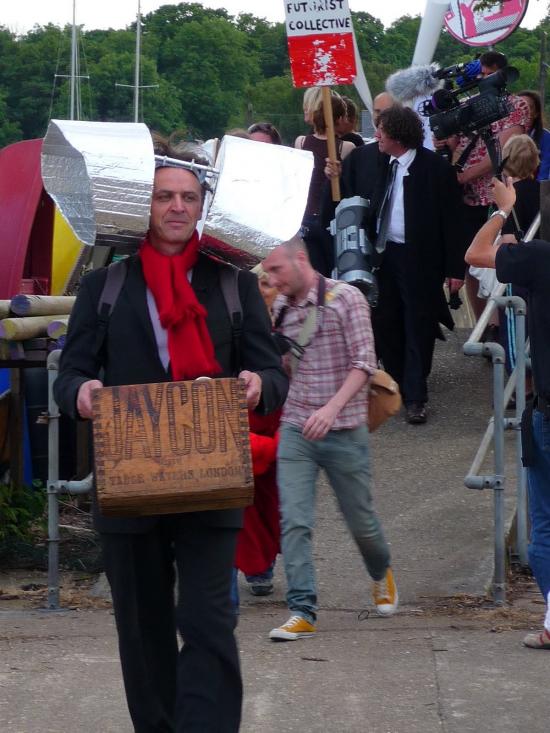
MG: Where did these ReAwakening of a City events happen, and what kind of response did you receive when these performance, interventions took place? How important was it to connect with others – every day people, whilst engaging in the process of expressing these real-life experiments?
JY: The first ReAwakening took place in Brighton in Feb 2008. We started off the project by declaiming the NeoFuturist manifesto (written by Rowena Easton) in Jubilee Square, with a bunch of workmen and their drills providing a fabulously appropriate accompaniment to the text which celebrates Urban NOISE. (The manifesto can be downloaded from www.neofuturist.org). The crowd then followed us onto the Arts Council offices where we laid a wreath on their steps in support of all the companies that had been recently cut – we were ourselves in receipt of Arts Council funding at the time. A classic case of biting the hand that feeds you. Our activities provoked mild amusement and little controversy however, as the good citizens of Brighton & Hove are used to seeing “crazy” artists peddle their wares in public.
A couple of months later we had our first performances of work-in-progress at The Basement, Brighton. The reaction here was far more hostile and interesting, with some audience members questioning our politics in the Q&A session afterwards, accusing us of proto- fascism. Actually the level of debate was thrilling, as we really touched people’s buttons and ended in a deep discussion about the impact of the Futurists and their relevance to the current political climate. This question surfaced again a few of months later in an online interview with The Thing Is… magazine.
We were fortunate after that to be invited to make a piece of work on Wall Street in New York for the psychogeographic festival, Conflux. Our proposal was to make a walking performance that explored the everyday experience of living and working in the Wall Street district and how this might inform our understanding of the impact that this small area of real estate has on the rest of the planet. We arrived on September 11th 2008 to be met by 9/11 conspiracy theorists on street corners, and proceeded to spend several days mapping the area through sound recordings, text and video in preparation for a dawn performance on 14th September – a ReAwakening as the city awakes. The effect was dramatic and unexpected, as my declaration of the NeoFuturist manifesto outside 1 Wall Street brought about the collapse of Lehmann Brothers that weekend and the subsequent domino effect on the global economic system. Sorry world!
Our next major intervention was more low key, but no less dramatic as we were commissioned by Fuse Medway festival to engage with and inspire the village community of Upnor. Our mission was to get the people to take to the streets in a protest/celebration march. We worked with the community over a number of months, holding public workshops and meetings, networking furiously in the local pub (one of four!) and it soon became clear that the general apathy towards the arts, and outsiders in general, meant that if the public were not going to come to us, then we would have to go to them. So we took to the streets and made work in public which enraged some, who questioned where our funding had come from, but delighted others and built a momentum towards our final performance.
A Call to Arms (as the piece was finally called) took place in June last year and was a very successful example, I think, of how one can make “community art” challenging as well as accessible. See http://neofuturist.blogspot.com for full documentation and a film of the performance.
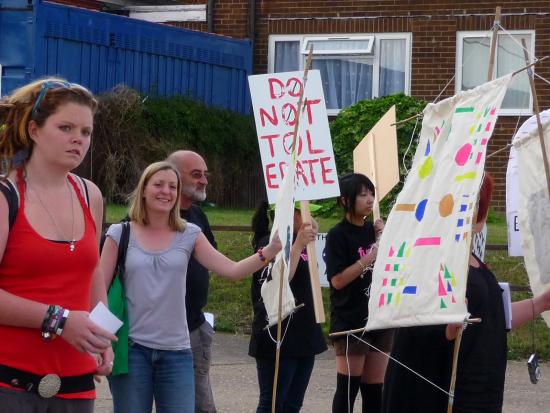
Other pieces of work, include shouting at the Futurist paintings with a megaphone, as part of the Tate Modern Futurist retrospective last summer. An experience as liberating as it was faithful to the original spirit of futurism, causing equal anger and delight amongst an unsuspecting public. I was also invited as a panellist to take part in a public debate along with other luminaries from the art world, on the subject of “Is the Avant Garde Passe?” organised by The Institute of Ideas in London. Here the public paid to witness a lively and informed panel discussion around the relevance of contemporary art, proving, it seems to me, that there is a real appetite for intelligent, politically driven commentary and debate.
A group of artists drawn from the fields of visual, performance, video and sound art will attempt to transform the everyday language of urban sounds and visual junk (such as spam emails and billboard advertising) into a true multi-media experience to do just that; asking us to question our assumptions about what is beautiful in a modern world of information overload.
MG: Your comments that contemporary art is in need of intelligent, politically driven commentary and debate rings true. In respect of my own art context(s). Thinking of the many amazing self-organised, networked communities, of which there are many, on-line and in physical space; there has been a massive shift of art creating, moving independently, yet in parallel to the ‘official’ and hegemonic examples accepted or considered contemporary at the moment. Of course, if we think about what contemporary means itself, it means existing, occurring, or living at the same time. The relationship between institutions and art which is actively critical and more challenging than easier processed art such as Brit Art, how they represent contemporary art.
Considering the history and knowledge we have regarding the original Futurist movement, and its close connections with fascism. For instance, what is less known is that, the Futurist movement did not only consist of fascists, but within it there were also socialists, anarchists, leftist and anti-Fascist supporters. Consisting of interesting individuals such as Georges Sorel, who explored his own views and intellectual thinking, right across the political spectrum. Georges Sorel “…was a voluntarist Marxism: he rejected those Marxists who believed in inevitable and evolutionary change, emphasising instead the importance of will and preferring direct action. These approaches included general strikes, boycotts, and constant disruption of capitalism with the goal being to achieve worker control over the means of production.” http://en.wikipedia.org/wiki/Georges_Sorel
I can see a direct link from Sorel’s activist approach and The NeoFuturist Collective’s ReAwakening events and performances. Of course, there are some other pretty good contemporary art activists out there at the moment, who also incorporate performance as part of their creative process; such as ‘The Office of Community Sousveillance’. “This work rests between legality and illegality. By posing as security officers, ‘PCSO Watch’ imaginatively play at the borders of what is typically deemed right and wrong, real and unreal, pushing their expression in the form of political enactments and direct action. This is a paradigm shift, not particularly interested in the art critic’s perspective.” http://www.furtherfield.org/displayreview.php?review_id=338
“Futurism has produced several reactions, including the literary genre of cyberpunk — in which technology was often treated with a critical eye — whilst artists who came to prominence during the first flush of the Internet, such as Stelarc and Mariko Mori, produce work which comments on futurist ideals.” The legacy of Futurism. http://en.wikipedia.org/wiki/Futurism#The_legacy_of_Futurism
With the understanding that there have been various influences, mutations and re-appropriations from the Fururist movement, I am wondering what elements you feel or think are still important to reclaim, reshape and reintroduce into a contemporary world, both in respect of the art arena and in relation to our everyday environments?
JY: What interests me in relation to the Milan Futurists is, first of all, the misperception, as you have pointed out, that futurism was primarily a fascist movement. My understanding is that Marinetti was the only artist to have that association, having been invited to serve on the Central Fascist Party Council after the First World War. He resigned not long after as soon as the Catholic Church was also invited to sit on the Council – Marinetti being an avowed atheist. This is not to excuse the entire movement of this problematic association, but it does put it in context. It also recognises that a spirit of optimism and a belief in technological solutions to the world’s problems, that futurism embodied, also has its’ darker side. And it is with this knowledge that I choose to engage with (neo)futurist ideas in the 21st century, as it seems to me, that in a world seemingly on the verge of collapse, that a spirit of positivity renewal is both urgent and necessary, and also the ultimate political gesture.
You mention various artist collectives that have appropriated the futurist legacy in this way, and to that I would add Ultra-Red who, incidentally, published a short sound piece of mine, recorded on Wall Street during the crash of 2008, as part of Fifteen Sounds of the War on the Poor vol.3.
In order to engage with the state of the planet, artists can no longer cling to romantic, utopian notions of nature/beauty in opposition to man/technology. This dichotomy seems to represent more about human self-loathing than it does about a workable solution to global warming/terrorism/the energy crisis/reform of global capitalism, etc. Moreover it leads us towards a new “medievalism” (ban air travel, ban cars, buy local) that is all too prevalent in ecological pressure groups. In this argument, man has brought us to the edge of destruction, therefore we must drastically scale back all of our wealth-producing activities. As if the (post)modern world could be wished away in either Luddite vision of the future or more worryingly in the ideology of The Zeitgeist Movement, whose apocalyptic vision of a radical eco-future involves tearing down our cities and rebuilding them.
This thinking is also represented in the work of acoustic ecologist and renowned nature recordist, Bernie Krause in his article, Anatomy of the Soundscape: New Perspectives, Journal of the Audio Engineering Society, Jan/Feb 2008 Vol. 56 Number 1/2, Pg 73-80 (2008), in which he dissects the soundscape (a term first coined by R Murray Schafer in Soundscape: The Tuning of the World) into 3 separate strata:
“GEOPHONY is framed as natural sounds emanating from non-biological sources in a given habitat.acoustic variations. BIOPHONY By far the most complex and laden with information, this unique feature of the soundscape is comprised of all of the biological sources of sound from microscopic to megafauna that transpire over time within a particular territory. ANTHROPHONY, defined as all of the human-generated sounds that occur in a given environment: physiological (talking, grunting, body sounds), electromechanical, controlled sound (music, theatre, etc.), and inci- dental (walking, clothes rustling, etc.).”
In this breathtaking philosophical leap, Krause removes the human from the natural environment and pits him/her in opposition to it. In creating a separate category for human sound activities outside of the biophony (i.e. the sounds of all other species on the planet), he is both over-stating human control and dominance over the environment and also denying us a role in the Gaia hypothesis – one of the green movement’s central texts, that views the Earth (and all of its inhabitants) as a single organism.
I am certainly not refuting or seeking to contradict many of the arguments regarding human sound activities and stress levels, posited by the World Soundscape Project, of which Krause is a prominent member, but it is worrying that so many eco-activists see humanity as a problem and not as a solution. And this is where Futurism and its antecedents/mutations can offer a way forward…
If, as I believe, we can find beauty within the drone (our drone), then the clamour of urban noise, both visual and aural, can be transformed in our perceptions into something of interest and value, rather a thing to be blocked out or ignored. If we can stand in a busy place such as Oxford Circus in the centre of London and open our ears to the sonic detail that is contained within the omnipresent drone of human activity, then we can begin to understand that activity as a creative as well as a destructive force. We can then harness and use this energy to power and revitalise the human spirit.
So, for me, the Art of Noises manifesto is the central and critical text in beginning to shape a new understanding of the contemporary sound and land-scape. If we can find a way of reframing urban noise as a meditative experience, as I recently did in my residency with Blast Theory, then we are part of the way to ReAwakening our cities as places of hope and optimism. To do this, I made a number of immersive binaural recordings of the area around 20 Wellington Road, where Blast Theory are based on the industrial outskirts of Brighton, and mediated these as iPod listening experiences in a temporary installation space that I set up for the event. When I came to retrieve participants from the room (they went in 4 at a time) they had invariably made themselves comfortable and been totally immersed in the sounds of the local traffic. They often described their experiences as “relaxing” and “enjoyable”, and how many times can you say that of the experience of standing beside a busy, urban, traffic-filled road?
So that is my mission for ReAwakening of a City; to take Russolo’s lead from the surviving 7 bars of his score to Awakening of a City (1914) and reframe and rework the paradigm of the celebration of urban noise to (re)awaken of all of the senses through a heightened perceptual shift in one of them – that of hearing; the neglected sensory cousin in our predominately visual culture. My ultimate ambition being to create a large-scale performance event for the 100th anniversary celebrations in 2014, in collaboration with like-minded artists from around the globe.